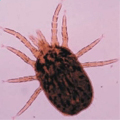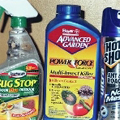@congopasta49
Profile
Registered: 1 year, 1 month ago
10 Things Your Competitors Can Lean You On Wood Burning Fireplace Maintaining a Wood Burning Fireplace The sound of a fireplace that is wood-burning is a great way to warm a home. If you have one, it's important to maintain it regularly to prevent dangerous creosote build-ups. The airflow can be controlled by a damper which is a crucial element of maintaining efficient combustion. The type of firewood used can affect the outcome, with hardwoods like oak and ash producing less creosote than softwoods. Energy Efficiency Wood fireplaces can be a beautiful design, generating a warm and cozy ambience. They aren't energy efficient and can contribute to air pollution if they are not maintained properly. The quality and condition of your chimney, firebox system, and installation could significantly affect the overall efficiency. Firewood is the main fuel source for a wood-burning stove. It is usually purchased in face cords or full cords (measured as 4'x8"x8") Before burning firewood, it should be "seasoned" in order to decrease the amount of water in it and increase its energy density. If the wood is too wet, it will not burn efficiently and can create lots of creosote. Seasoning wood can take months or even a year depending on the weather and the conditions of the climate. Wood burning fireplaces require a substantial investment of time and money to ensure they are maintained correctly. In addition to purchasing a huge quantity of firewood, homeowners should regularly clean and inspect their fireplace to ensure that the chimney is free from obstructions and that it's functioning properly and that any combustible material is not stored close to the fireplace. Regular cleaning and inspections will reduce the chance of chimney fires and room fires. Smoke from wood-burning stoves is a source of fine particle pollution which can damage the lungs and cause serious health issues like lung disease, cardiovascular disease and heart attacks. It also releases toxic air pollutants such as nitrogen oxides and volatile organic compounds, benzene, and formaldehyde. Wood smoke contributes to atmospheric depletion of ozone and greenhouse gases, which can harm the climate of the earth. Effective EPA-certified wood stoves employ an additional combustion process to minimize the production of harmful emissions during the firing. These stoves also require a suitable size chimney as well as a flue liner to optimize performance. It is also crucial to buy firewood that is seasoned and avoid the temptation to add accelerants such as lighter fluid, gasoline or butane torch to the flame as this can overload the fire and lead to a hazardous situation. To prevent termite invasion homeowners should also keep their firewood far away from their home. Cleanliness Wood-burning fire places are a great alternative to other heating methods. They also create a peaceful ambience. They can be used as primary or as supplemental heat and could be eligible for tax credits. They can be messy, and require regular cleaning to prevent soot and creosote buildup. A dirty fireplace can produce unpleasant odors and toxins and can affect the quality of air in the home. The most important thing to remember when using a fireplace made of wood is to make use of dry firewood. Using kiln dried firewood will aid in reducing creosote and buildup. wood burning stove dried wood is treated in a kiln or oven to eliminate all moisture. It is recommended to only burn clean well-seasoned (burned) wood that has been sliced and placed in a stack for a couple of months prior to use. Before you start a fire remove ash from the fireplace floor and around the smoke shelf and grate. Make sure that the ashes are cool before placing them in the metal waste bin to be disposed of. Using a dust pan or whisk broom as well as sweeping and dumping any other debris that may have accumulated outside the fireplace. Wear gloves and an apron when cleaning a fireplace in order to protect yourself from dust, soot and dirt that will be created. To safeguard your furniture from stains, clean the area and cover it with drop cloths. You should also wear a mask to avoid inhaling any soot or ash particles. Fill a large bucket with warm water. Add 3.8 tablespoons of trisodium phosphate (TSP), 1 cup of bleach and 2 tablespoons of household ammonia. Mix the mixture well, and then use a nylon brush scrub the walls of your fireplace and the surrounding areas. After scrubbing the walls and the areas around your fireplace, clean it off with a clean, damp cloth. Repeat the scrubbing, rinse and wiping until all visible stains are eliminated from your fireplace. Once you're satisfied with the cleanliness you can employ the glass cleaner that's safe for wood-burning stoves for cleaning any glass doors. Aesthetics Wood fireplaces are beautiful and cannot be compared to modern propane or gas fireplaces. Their rustic look, crackling sound of a burning fire and their warm feel create an atmosphere that has long stood the test of time. Many people look for this feature when purchasing fireplaces. Wood-burning fireplaces can be excellent for heating your home However, they also emit harmful gases. These include carbon monoxide and smoke that can cause lung damage. It is crucial to have an effective system to eliminate these toxins, even if fireplaces are well ventilated. This is the reason why many prefer a zero clearance wood burning fireplace design which helps to lower the quantity of harmful gases that are present in your home. There are many different ways to design your wood fireplace to create a unique attractive. You can use recycled wood to give it a rustic look, or you can choose to paint it to complement the decor of your living room. You can also build an edifice of stone that leads to the fireplace, creating a fun and functional feature in your home. You can also change the color of your chimney. The most popular color is black, which looks beautiful and matches most homes. Another option is to paint your fireplace white, which opens up the space and creates a light and airy atmosphere. Gray is a popular choice that can be paired with a variety of styles and is trendy. Some homeowners even mix beige and gray together called greige to highlight this versatility and aesthetic. The best way to make a fireplace look less old fashioned or obtrusive is to paint it to match the walls around it. This can be done in a deep neutral that is on-trend, like grey, or a warm and earthy tone such as brick or terracotta red. The idea is to create a unified space that does not draw attention to itself, but rather blends in with the rest of the room. If you are unsure about which colour to go for, you can always ask a professional for advice. Safety If they are not maintained and operated properly If they are not maintained and operated properly, wood burning fireplaces could pose serious dangers to safety. They emit fine particle pollution which can penetrate deep into the lungs and cause lung diseases. They also release harmful air pollutants such as carbon monoxide and volatile organic compounds. Wood smoke also contributes to climate change by releasing methane and carbon dioxide. The flue of a wood stove should be cleaned and inspected regularly to ensure that it is working properly. A clean, functioning flue helps stop dangerous carbon monoxide leaks and chimney fires. If the flue's lining is deteriorating it should be repaired or replaced immediately. Keep flammable materials like drapes, curtains, and other flammable objects away from the wood stove. It is a good idea to install cross-ventilation, which assists in moving warm indoor air throughout the home so that it doesn't get pushed back up the chimney. Ashes should be cleared from the fireplace on a regular basis to avoid them accumulating too deep and obstructing air flow. A lot of ash can reduce the oxygen supply for logs, which will reduce the efficiency of combustion and resulting in more smoke. The ashes can be kept in a metal container or a similar noncombustible container. Children should be kept away from the area around the fireplace, especially in the case of a glass front. There is a risk of burns by touching the hot surfaces during and after an fire. In addition, the different tools used to maintain a fireplace like pokers, log lifers and shovels, are dangerous for kids to handle. To prevent children from accidentally contacting the fireplace and causing harm, it is recommended that a "safety area" of three feet must be created around it. Installing a carbon monoxide alarm as well as detector in your home is also a great idea particularly if you own a wood stove. Carbon monoxide is poisonous and may accumulate if the wood stove and chimney are not working properly. In addition, it is essential to verify the state, local, and tribal regulations on wood-burning fireplaces. These rules could include rules governing nuisances and odors, "no-burn days" and restrictions on visible emissions, or opacity of smoke coming from chimneys. These laws are typically designed to reduce air pollution and protect the public's health.
Website: https://www.fireplacesandstove.com/categories/wood-burning-stoves
Forums
Topics Started: 0
Replies Created: 0
Forum Role: Participant




